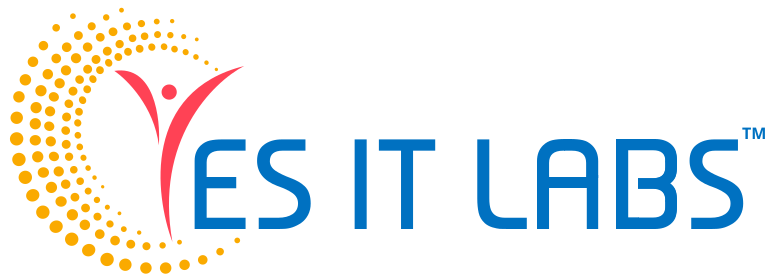In today’s fast-evolving digital landscape, companies face a myriad of challenges that off-the-shelf products often cannot address. Custom software development allows organizations to overcome limitations by providing personalized tools that drive long-term success. At its core, the Advantages of Custom Software Development revolve around flexibility, scalability, and the potential for increased competitive advantage.
Whether you are a startup founder exploring a new idea or an established enterprise looking to streamline operations, custom software development offers unique benefits that empower you to innovate without compromise. Custom solutions are built with a deep understanding of your operational processes, ensuring optimal performance and a seamless integration with existing systems. By aligning technology with business objectives, organizations can unlock significant value and achieve a higher ROI on their IT investments.
By the end of this post, you will be equipped with a comprehensive understanding of why custom software development is not just an option, but a strategic imperative for forward-thinking companies.
What Is Custom Software Development?
Before diving into the advantages, it is important to clearly define what custom software development means. Unlike off-the-shelf software—which is designed for a broad audience—custom applications are developed specifically for your business’s unique process requirements and challenges. This personalization means the resulting software is perfectly aligned with your workflows, data structures, and organizational goals.
Historically, businesses have opted for ready-made software solutions partly because they are cheaper and faster to deploy. However, as competition intensifies and operational complexity rises, more companies are turning to bespoke systems that are optimized for their internal needs. By involving development teams that work in close collaboration with your key stakeholders, you are ensured that every element of the software reflects concrete business models and competitive strategies.
The custom development process typically begins with thorough research and analysis, including stakeholder interviews, detailed process mapping, and competitive benchmarking. From there, developers design, prototype, test, and refine each module until it achieves optimal performance. The result is a tool that not only automates tasks but also provides strategic insights through data integration, predictive analytics, and user-friendly interfaces.
For startups and established businesses alike, the decision to build rather than buy is driven by the desire for uniqueness. Off-the-shelf solutions have a one-size-fits-all approach, which can lead to unnecessary features and integrations that do not add value to your specific operations. On the other hand, custom software development ensures that every feature is built with purpose, leading to a more efficient and reliable system tailored exactly to your needs.
Advantages of Custom Software Development
Custom software development provides powerful benefits that cannot be achieved through pre-packaged solutions. In this section, we discuss the core benefits and address why investing time and resources in a custom solution is a critical strategic choice.
1) Tailor-Made Functionality
One of the most significant benefits of opting for a custom solution is that you receive software that is built entirely to meet your business requirements. No longer do you have to adapt your workflow to fit a generic product; instead, the software adapts to you. This tailor-made functionality ensures that every feature is purposeful, streamlining operations and eliminating redundant processes.
Every business operates in its own ecosystem. Custom software is designed after thoroughly understanding your processes, enabling you to automate unique tasks, consolidate data more effectively, and boost overall productivity. By focusing solely on functionalities that matter to your company, you can reduce training time, minimize errors, and adapt more quickly to industry shifts.
2) Enhanced Integration and Scalability
Custom software seamlessly integrates with your existing tools and processes. Unlike standardized solutions that might require extensive tweaks to match your infrastructure, a custom-built system is scalable and grows with your business. Whether you need to integrate with legacy systems, third-party APIs, or cloud platforms, a bespoke solution can be engineered from the ground up to ensure compatibility and future readiness.
Scalability is a crucial factor in today’s dynamic markets. Companies often experience growth spurts or shifts in demand that necessitate rapid changes in their IT infrastructure. With a custom solution, you have the flexibility to modify and expand your software as needed, ensuring that you are always in step with market demands and technological advancements.
3) Robust Security and Compliance
One pressing concern in today’s digital age is security. Off-the-shelf software often comes with vulnerabilities that are well-known and easily exploited by hackers. Custom solutions, on the other hand, provide enhanced security measures tailored to your organization’s risk profile. By building security into your application from the outset, you can protect sensitive data and comply with industry-specific regulatory requirements.
A customized approach means not only incorporating the latest security protocols but also ensuring that your compliance guidelines are met. Many industries are subject to strict regulatory oversight, where data handling, privacy, and auditability are critical elements. Custom applications allow you to design measures that protect your data proactively, significantly reducing potential liabilities and instilling confidence in your customers and partners.
4) Improved Performance and Efficiency
Custom software is designed to perform optimally under the unique conditions of your business environment. Off-the-shelf options are burdened with features that may never be used, consuming resources and slowing down overall performance. A custom-built application focuses solely on the functionalities you require, resulting in a leaner, faster, and more efficient system.
Optimizations can be made at every stage of development—from the code architecture to the user interface—ensuring that your application runs smoothly even during peak usage times. Additionally, custom software often benefits from continuous optimization and support provided by the development team, ensuring that it remains in top form throughout its lifecycle.
5) Future-Proof Investments
Technology is a rapidly moving target. What is state-of-the-art today can become obsolete within a few years. One of the prime advantages of custom software development is that it allows you to future-proof your application. With a bespoke solution, you can plan for regular updates, incorporate emerging technologies, and adjust to changing business models without incurring exorbitant costs.
A well-designed custom application is more than just a tool—it’s an evolving asset that grows with your business. By investing in a system built for constant improvement, you relieve concerns over software obsolescence and ensure that you remain competitive long-term.

The Business Case for Custom Software Development
In today’s fast-paced market, the decision to develop custom software is rarely made on a whim. In this section, we delve into the compelling business cases for why companies worldwide are shifting from generic products to bespoke systems.
1) Driving Operational Excellence
Every company seeks to improve its processes and outcomes. Custom software development is a strategic investment that directly impacts operational excellence. By integrating business-specific features and automating unique processes, custom solutions eliminate redundancies and mitigate potential delays that can occur when using generalized tools.
With a bespoke system, you can map out workflows accurately, track real-time performance, and adapt to sudden changes with agility. This operational precision translates into tangible benefits such as cost savings, time efficiency, and improved profitability. Ultimately, a custom solution turns IT expenditures into long-term investments that pay off through sustained process improvements and competitive differentiation thus boosting small business growth with custom software development.
2) Enhancing Customer Experiences
Customer expectations are higher than ever. Whether your audience consists of end-users or internal employees, modern software must offer unrivaled usability and robustness. Custom software development ensures that the user experience is tailor-made, taking into consideration how people interact with your systems on a daily basis.
Enhanced user interfaces, personalized functionalities, and seamless integration with other digital tools create an environment where user satisfaction is paramount. Satisfied users translate to higher retention rates, better adoption of new technologies, and ultimately, stronger brand loyalty. Businesses that invest in high-quality custom applications frequently see improved customer retention and an enhanced reputation in the marketplace.
3) Agile Adaptation to Market Shifts
Market conditions are in constant flux. Regulatory environments, technological advancements, and customer preferences continually evolve. Off-the-shelf solutions are inherently inflexible, making it difficult to accommodate these shifts. In contrast, custom software development is inherently agile—you can build flexibility into your system from the ground up.
When tailored to your business model, your software can quickly adapt to regulatory changes, market shifts, or new business opportunities. This agility is particularly important for startups and innovative companies that thrive on being ahead of the curve. Instead of struggling with cumbersome software updates or patchwork solutions, you can implement changes rapidly, ensuring that your business remains competitive no matter how the landscape evolves.
4) Leveraging Data for Better Decision-Making
Data is the new currency of the digital age. Yet, many off-the-shelf systems are limited in their capacity to offer meaningful insights due to generalized reporting features. Custom software solutions enable you to capture, analyze, and interpret data in ways that are uniquely relevant to your business.
By designing the software to aggregate data from across your operations, you can derive actionable insights that improve decision-making. Better data leads to more informed strategies, predictive insights, and ultimately, smarter business moves. As companies accumulate more data, the advantage of having a bespoke system that interprets this information continues to multiply over time.
5) Investment in Competitive Advantage
Ultimately, opting for custom software development is an investment in your competitive advantage. While the upfront cost may be higher relative to off-the-shelf solutions, the long-term gains far outweigh the initial expenditure. Custom software is not merely a purchase; it is a strategic upgrade that aligns technology with your unique business needs.
With enhanced security, optimized performance, and tailored features, your organization is better positioned to outpace competitors who rely on generic systems. This alignment of technology with business strategy is particularly evident in industries where precision and adaptability are the keys to success. Custom development transforms IT expenditure into a catalyst for differentiation, setting you apart in a crowded marketplace.
Implementation Best Practices: Advantages of Custom Software Development
Seamlessly implementing a custom software solution is both an art and a science. In this section—with a focus on the Advantages of Custom Software Development—we detail best practices and strategies that ensure your custom solution delivers maximum value.
1) Detailed Requirement Analysis and Stakeholder Involvement
The first and arguably the most critical step in any custom software project is conducting a thorough requirement analysis. Engaging all relevant stakeholders—from end users to senior management—ensures that the software addresses every aspect of your business. Requirements must be documented meticulously, including process maps, user stories, and anticipated challenges. This process paves the way for a solution that is comprehensive and aligned with strategic priorities.
2) Agile Development and Continuous Feedback
Given the complexity of custom solutions, an agile development framework is ideal for ensuring flexibility and continuous improvement. With agile, development proceeds in iterative cycles, allowing real-time feedback and adjustments. Frequent communication between developers and stakeholders ensures that the evolving software remains on target. This approach not only mitigates risks but also fosters a sense of ownership among your team, leading to higher adoption rates and better outcomes.
3) Integration Testing and Quality Assurance
No software solution is complete without rigorous testing. Custom software must integrate seamlessly with your existing systems, and this requires extensive quality assurance processes. Integration testing, performance assessments, and user acceptance testing are crucial to ensure that the final product is robust and ready for real-world challenges. Investing in these quality checks pays off in long-term operational stability.
4) Post-Launch Support and Iterative Improvements
A truly effective custom solution is supported long after its initial deployment. It is important to engage with a dedicated support team that can address issues, roll out updates, and implement improvements as your business evolves. Such ongoing maintenance not only protects your investment but also ensures that the custom software remains aligned with emerging market trends and technological advancements.
5) Data-Driven Decision Making
Throughout the implementation process, lean on data to make informed decisions. Custom software, when built with robust analytics features, can provide insights that drive continuous improvement. Use performance metrics, customer usage data, and operational KPIs as your compass to adjust features, enhance user experience, and improve overall system efficiency.
You can checkout our blog post on the trend and challenges in software development for more understanding on this section.

Navigating the Custom Software Ecosystem
Having explored the many benefits and implementation methods, it is important to consider the broader ecosystem involved in custom software development. The landscape is dynamic, and choosing the right partners and strategies is critical to success.
1) Choosing the Right Development Partner
Selecting a technology partner for developing a custom solution is a decision that influences your project from conception to completion. When evaluating potential partners, consider their expertise, portfolio, client testimonials, and alignment with your industry. Transparent communication and a proven track record are strong indicators of a partner who will contribute not just technical skills but also strategic insights.
For instance, if you are seeking a dedicated offering, consider engaging with a reputable custom software development service that has demonstrated deep industry knowledge and a history of successful implementations.
2) Balancing In-House and Outsourced Teams
Depending on your company’s structure and the complexity of the project, you might decide on a hybrid approach that leverages both in-house expertise and external consultants. In-house teams provide institutional knowledge and an intimate understanding of your operations, while outsourced teams offer specialized skills and fresh perspectives. Balancing these resources effectively can optimize both cost and quality.
3) Leveraging MVP Strategies for Early Wins
In many cases, launching a fully featured product might be too resource-intensive or risky. Instead, consider an MVP (Minimum Viable Product) approach to validate the market and gather early feedback. An MVP strategy allows you to launch a core version of your product with essential features, gain user insights, and iterate rapidly. This approach minimizes risks while laying the foundation for future enhancements.
4) Strategic Partnerships in the Mobile Space
In today’s digital age, mobile access is paramount. Many organizations now recognize the need for a solution that extends beyond desktop applications. Collaborating with experts who specialize in mobile platforms can enhance the reach of your custom solution. Working with a partner who not only understands software development but also the nuances of mobile user behavior is critical for sustained success.
For companies seeking to extend their digital footprint, partnering with a leading mobile software development company can ensure that your app is both intuitive and robust on mobile platforms.
The Evolution and Future Trends of Custom Software Development
Custom software development is not static—it evolves with technology, market dynamics, and user expectations. Understanding where the industry is headed can help you future-proof your solution and keep your competitive edge intact.
Emerging Technologies and Their Role
The rapid advancement of technologies such as artificial intelligence (AI), machine learning (ML), blockchain, and the Internet of Things (IoT) is reshaping how custom software is conceived and built. These emerging technologies offer exciting possibilities for innovation. For example, AI can further optimize user experiences with predictive analytics, while ML algorithms can facilitate smarter decision-making. Adopting these technologies in your custom solution not only enhances functionality but also opens up avenues for new revenue streams.
The Shift Toward Cloud-Native Architectures
In recent years, there has been a significant shift from traditional on-premise solutions toward cloud-native architectures. Cloud technologies offer scalability, reduced infrastructure costs, and agile deployment models. For custom software projects, this means you can build applications that are both flexible and resilient. Cloud integration enables seamless updates, high availability, and extensive security protocols that are crucial in today’s data-driven environment.
Data Privacy and Regulatory Compliance
As custom software solutions handle increasingly sensitive information, data privacy and compliance have become top priorities. Developers must integrate privacy by design into architectures while ensuring strict adherence to regulations such as GDPR, HIPAA, and regional standards. As data breaches continue to make headlines, robust custom software that emphasizes security and compliance is not just a selling point—it’s a necessity.
Collaborative Ecosystems and Open Innovation
Modern custom software projects are often born out of collaboration between multiple stakeholders—business leaders, developers, UX/UI experts, and even end users. Open innovation models encourage collaboration across industries, leveraging shared insights and collective expertise. This is particularly true for companies engaged in digital transformation, where agile practices and collaborative ecosystems accelerate project success. The future of custom software development lies in harnessing the power of diverse teams and flexible methodologies that foster creativity and rapid iteration.
Overcoming Challenges in Custom Software Development
Even with the outlined benefits, embarking on a custom software journey can present distinct challenges. Recognizing these risks is the first step in mitigating them. Here are a few common challenges and practical strategies to overcome them:
Managing Scope Creep
One of the most frequent issues in custom software projects is scope creep. As the development process unfolds, additional requests often emerge—sometimes beneficial, sometimes distracting. A rigorous requirement analysis and a clearly defined project roadmap serve as the cornerstone of managing project scope. Regular review meetings, change management policies, and agile project management tools can help keep the project on track.
Ensuring Stakeholder Alignment
When multiple teams and departments are involved, aligning expectations is critical. Clear communication channels, comprehensive documentation, and periodic feedback loops help ensure that every stakeholder—from the executive team to end users—is on the same page. This alignment is essential to avoid costly revisions and maintain the overall vision of the project.
Securing Adequate Resources and Expertise
Custom software development can be a resource-intensive endeavor—both in terms of time and finances. Securing the right balance of internal and external expertise is paramount. Investing in training, collaborating with experienced vendors, and ensuring that project managers maintain close oversight can drastically reduce the risk of delays and budget overruns.
Adapting to Changing Technologies
The pace of technological change is relentless. What is cutting-edge today might be outdated tomorrow. To safeguard your investment, it is important to adopt a modular and scalable architecture that allows for future updates. Maintaining open lines of communication with your development partner and staying abreast of industry trends will help you rapidly integrate emerging tools and methodologies.
Best Practices for Maximizing ROI from Custom Software Development
While numerous benefits make custom software development inherently attractive, ensuring that these benefits translate into tangible business outcomes requires strategic planning and execution. Below are best practices that can help you maximize your return on investment.
Set Clear, Measurable Goals
Before any lines of code are written, it is vital to set clear objectives for what you expect the software to achieve. Whether it is reducing operational costs, improving customer satisfaction, or driving revenue growth, well-defined goals will serve as benchmarks for success. These metrics are crucial not only for internal evaluations but also for justifying the investment to key stakeholders.
Focus on User Experience (UX)
A common factor in the success of any software solution is the quality of its user interface and overall experience. In today’s competitive marketplace, software that is difficult to use will quickly become a liability. Investing in UX design from the outset ensures that your custom solution is intuitive, accessible, and engaging for all users—regardless of their technical expertise.
Prioritize Robust Project Management
Effective project management is the linchpin of any successful custom software effort. A dedicated project manager who understands both the technical and business aspects of the project can make all the difference. Employ scheduling tools, agile methodologies, and risk management frameworks to keep the project moving steadily toward its goals.
Plan for Continuous Improvements and Future Upgrades
Custom software is not a one-and-done endeavor. As your business evolves, so too should your software. Establish a long-term maintenance and upgrade plan that includes periodic reviews, performance assessments, and feature enhancements. This forward-thinking approach ensures that your solution remains a valuable asset well into the future.

Investing in Your Custom Software Future
At its essence, custom software development is an investment in creating a technology asset that works as hard as you do. To put it simply, the right custom application can revolutionize how your business operates, leading to improved efficiency, competitive differentiation, and sustainable growth.
1) Aligning IT with Business Strategy
One of the key reasons that businesses choose to develop a custom solution is to create a strong alignment between their IT infrastructure and overall business strategy. Unlike generic tools, bespoke software is built around your strategic vision—whether that means automating critical processes, enhancing customer relationships, or driving innovation. This alignment is crucial for long-term success and creates measurable financial and operational benefits.
2) Measuring Success and Continuous Learning
To truly benefit from a custom software solution, businesses must adopt a mindset of continuous learning. Construct metrics that evaluate the software’s performance against your strategic objectives. Regularly assess the output—be it through improved productivity, higher customer retention, or better market responsiveness—and be ready to iterate on insights gleaned from the data. This commitment to continuous improvement not only maximizes your ROI but also fosters an organizational culture geared towards innovation and excellence.
3) Fostering a Collaborative Ecosystem
Custom software projects benefit immensely from a collaborative environment where cross-functional teams work together seamlessly. Involving departments like marketing, operations, and customer service from the beginning can provide valuable insights that enrich the final product. Collaboration ensures that the software addresses the practical realities of daily operations and leads to broader adoption across the organization.
Final Thoughts
As you consider this extensive guide on custom software development, take time to reflect on your organization’s unique challenges and strategic priorities. Evaluate whether the potential improvements in efficiency, security, and customer engagement can be realized through a tailored solution. With careful planning, agile methodologies, and a commitment to continuous improvement, your custom software can serve as a powerful catalyst for innovation and growth.
In today’s dynamic business environment, a well-designed custom solution not only addresses your immediate needs but also lays the foundation for future transformation. The technical superiority of a handcrafted application, combined with a strategic vision for growth, translates into real business value—a value that is recognized and trusted by industry leaders worldwide.
As you move forward with your digital transformation journey, keep in mind that the custom approach is an investment in agility, efficiency, and long-term competitive advantage. Let your software be a mirror of your business vision, reflecting both the present and the promise of tomorrow.
Thank you for taking the time to explore this comprehensive guide on the Advantages of Custom Software Development. By thoughtfully considering the insights and best practices shared in this post, you will be well-equipped to navigate the complex landscape of custom application development and make decisions that empower your organization to thrive in the digital era.







